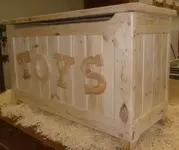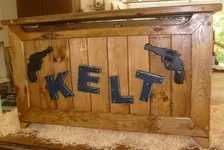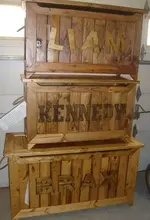Actually, there's a huge difference between stains and dyes. The short answer is, stains have solid particles that partially cover the wood grain, whereas dyes do not have solid particles, but rather they change the color of the wood fibers. As for dyes, there are water-based, oil-based and alcohol-based. I only used dyes once or twice, so that's the extent of my knowledge.
As for the raising of grain, if you want to go with a water-based finish, you will have less sanding. ANY TIME that you use a water-based finish (or water comes in contact) with wood, the water will be absorbed by the wood grain and it will swell, as well as loose fiber ends basically warping out of their straight alignment. As I wrote before...maybe in PM - can't remember - I worked mostly with Southern Yellow Pine growing up, and the amount of pitch in SYP would cause stains and finishes to turn out blotchy. So for SYP, you MUST use a sanding sealer for a decent finish. Even painting goes better after using a sealer. Also, sealers are not expensive. They also dry fairly quick. They raise the wood grain while they seal, which allows you to do most of your sanding prior to applying the stain/topcoat. If you choose to forego the sealer, that's ok - apparently you're not getting SYP there. It may be some other type of pine or, in certain areas, construction lumber might be made of fir or cedar. In California, they used to make construction lumber out of Redwood a lot - don't know if they still do. I think now you probably have to pay extra for Redwood lumber construction grade.









 I guess build a spray booth first... right?
I guess build a spray booth first... right? That wasn't from drugs, it was from epoxies and industrial coatings, when I was younger....
That wasn't from drugs, it was from epoxies and industrial coatings, when I was younger....